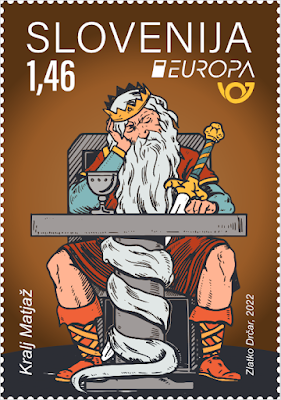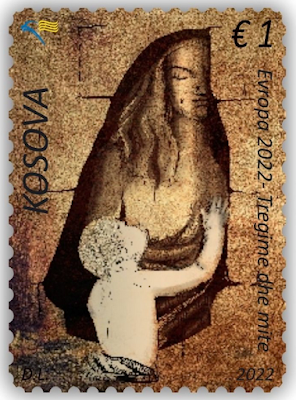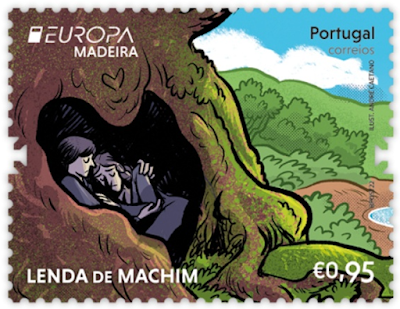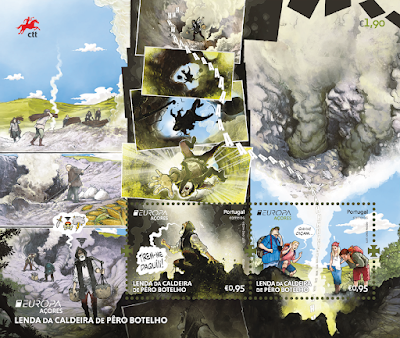 Slovenia
Slovenia
Date of Issue: 27th May 2022
two stamps (1.33 & 1.46 €)
both stamps are issued in mini-sheets of 8 stamps + 1 vignette
The Giantess (Ajdovska deklica) is one of many mythological figures in a Slovene folk tradition that tells of a mountain-dwelling race of giants. These giants were said to have lived “long ago”, so stories about them are though to contain popular beliefs about the original inhabitants of the land. Stories about giants and giantesses vary considerably. People used to explain ancient material remains and prehistoric burial mounds as giantish structures. The former inhabitants of these structures were said to be trapped by enchantments in the ruins – or in some cases even in the walls of churches, as with the story of the giantess’s rib in the pilgrimage church at Crngrob near Škofja Loka. There are many tales and legends about giants and giantesses, but perhaps one of the best known is the story of the petrified giantess on the face of Prisank, a mountain near Kranjska Gora. According to the legend, a giantess prophesied that a hunter’s newborn son would grow up to be a hunter like his father and would one day shoot the golden-horned chamois known as Zlatorog. This prediction angered the other giantesses, who turned their fortune-telling sister to stone, trapping her on the side of a mountain, where she can still be admired today by the many visitors to Slovenia’s Julian Alps.
King Matjaž is a well-known figure in the literary folklore of Slovenia. The basis for many legends of King Matjaž is the Hungarian king Matthias Corvinus (1458–1490), who distinguished himself in the defence against the Ottoman invaders and also ensured tolerable living conditions for Slovene peasants. Stories about King Matjaž do not have a basis in historical fact but have merely taken the king’s name. Similar stories are told in Hungary, Slovakia, Romania and Croatia. The first written texts about King Matjaž date from the sixteenth century. Over time, numerous other elements were added to the original tale. These were of Indo-European, Oriental and medieval origin and in some cases
can be linked to King Arthur, Charlemagne, Frederick Barbarossa and Frederick II. In amongst this multitude of elements of diverse origin, the version of the tale most commonly told in Slovenia is that of King Matjaž asleep with his army beneath a mountain (in this case the mountain is Peca/Petzen, which straddles the border between Slovenia and Austria). Legend has it that when he awakes and appears once again, good times will return. It seems that he will continue to sleep for a long time!


















































